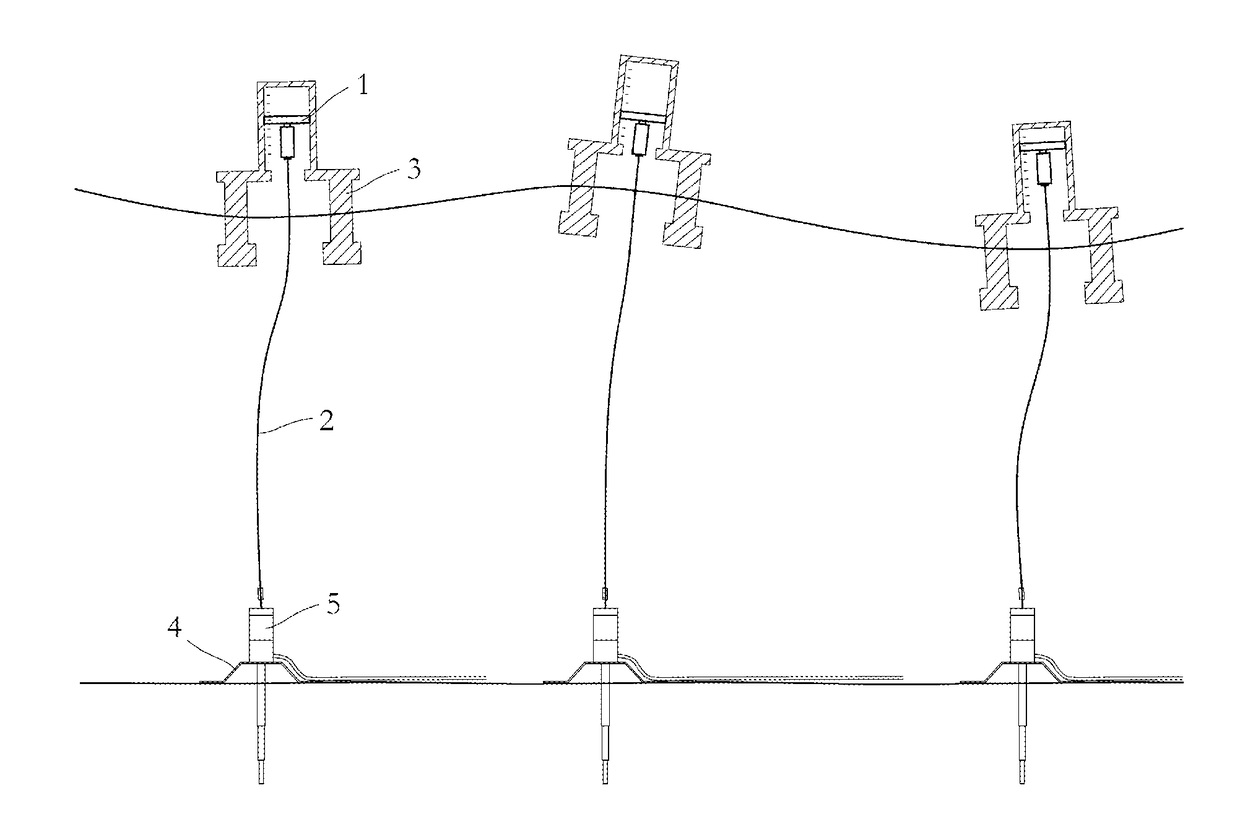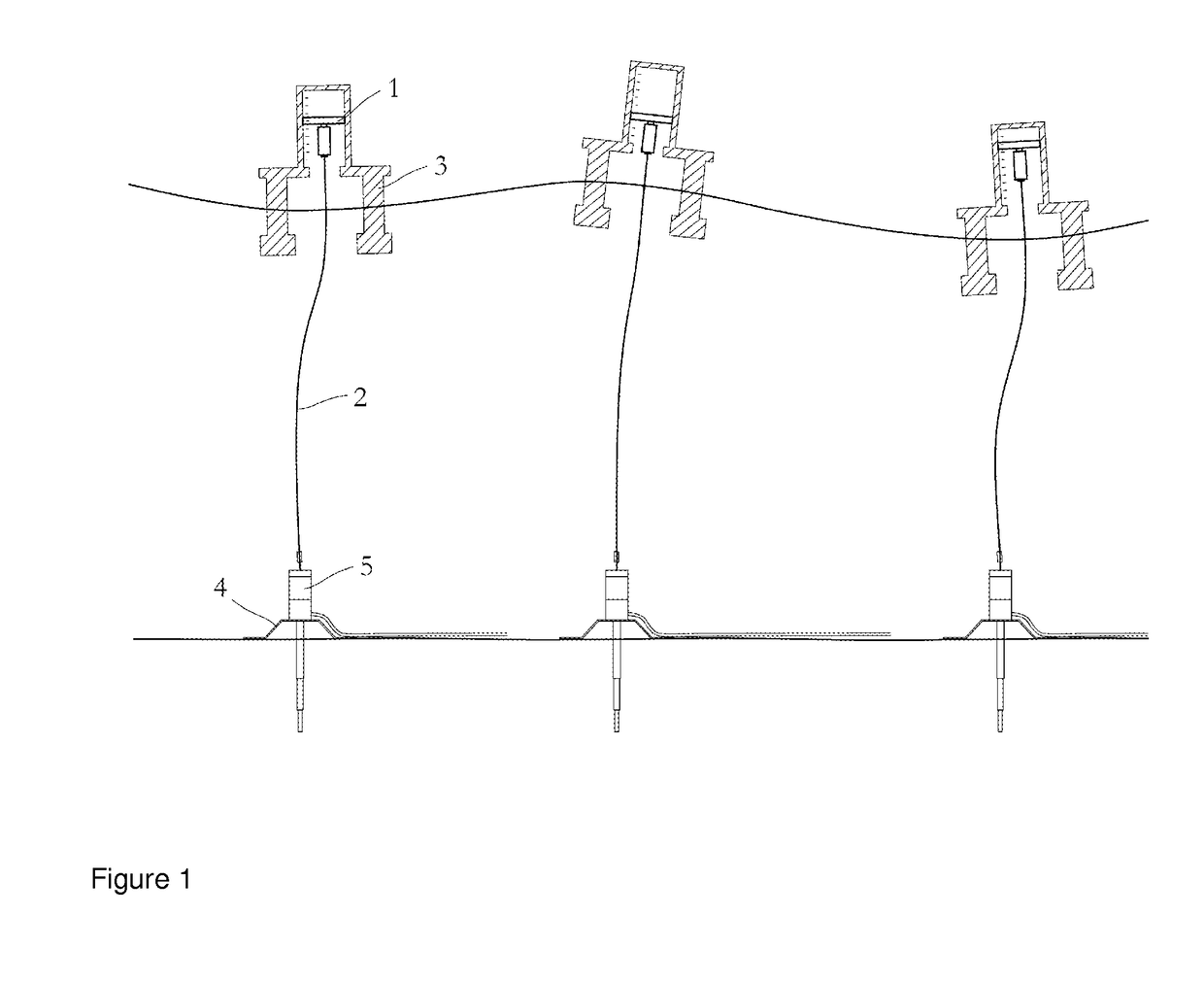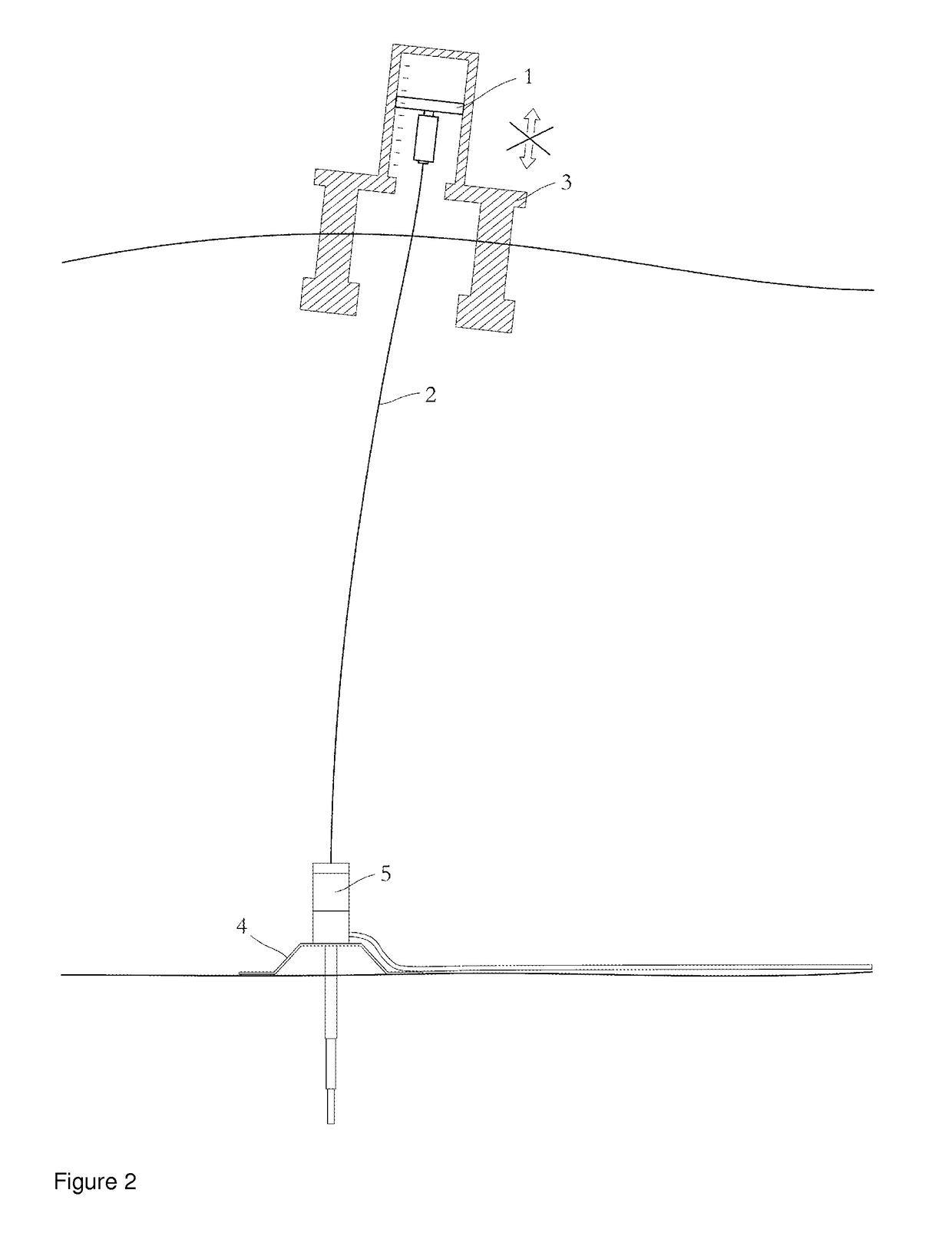In such accidental scenarios operators will have very limited time to recognize that an accident is happening and to trigger a release of the riser from the well or other
critical structure(s) attached to the riser.
This may result in snag loads and excessive tension forces on the riser 2.
However, one challenge is that during normal operation the vessel 3 may be positioned within a certain operational window above the well on the
seabed 4.
For dynamically positioned (DP) vessels, loss of position is normally caused by DP failure or by operator error causing the vessel 3 to drive-off from its intended position.
In a drift-off
scenario the vessel either does not have sufficient power to stay in its position given the current weather conditions, or vessel power is lost and the vessel will drift off in the direction of the wind,
waves and currents.
Exceeding the
load capacity of the well barrier(s) 5 may involve damage of the well head, damage inside the well, damage on the riser 2 etc., all of which are considered to be serious accidental scenarios with high risk towards personnel and the environment.
Damage of the well barrier(s) 5 may result in costly and
time consuming repair work, costly delays due to lack of progress in the operation, and last, but not least, environmental and human risks in the form of
pollution, blow-outs, explosions, fires, etc.
The ultimate consequence of well barrier damage is a
full scale subsea blow-out, with oil and gas from the reservoir being released directly and uncontrollably into the ocean.
If the down-hole
safety valve should fail or be damaged in the accident, there are no more means of shutting down the well without drilling a new side well for getting into and plugging the damaged well.
The challenges with existing weak link designs are related to the combination of fulfilling all design requirements (safety factors, etc.) during normal operation of the
system, and at the same time ensuring reliable disconnect of the system in an accidental
scenario.
It is not uncommon that the weather window for an operation is limited because the weak link can only accommodate a certain vessel offset in normal operation as illustrated by a typical operational diagram shown in FIG. 4.
Therefore, the ability of the weak link to fail due to bending may affect the weather window of the operation.
The effect of
internal pressure causes a dilemma in weak link designs based on
structural failure:1. The weak link needs to be dimensioned for operation under full pressure with normal safety margins.2. The tension and bending capacity of the well barrier(s) are reduced by internal pressure.3. In some operations the well barrier(s) will be pressurized, but the riser with the weak link will be unpressurised.4. In an accidental scenario the weak link must release before the well barrier(s) is(are) damaged, even when the well barrier(s) is(are) pressurized and the weak link is not pressurized.
Point 4 above is often challenging to achieve in the design of a weak link based on
structural failure because the band between minimum capacity in normal operation and maximum break load in an accidental scenario becomes too wide.
In additional, to the technical challenges related to existing weak link solutions based on structural failure, there are also schedule and cost challenges related to the conventional systems.
These qualification programs and the additional requirements for particular material properties are often a challenge with respect to project schedules.
If the combined loads exceed this line there is no guarantee for the integrity of the well barrier(s), and it is likely that the barrier(s) is(are) damaged and possible leaks may occur.
 Login to View More
Login to View More  Login to View More
Login to View More 


